Thingiverse
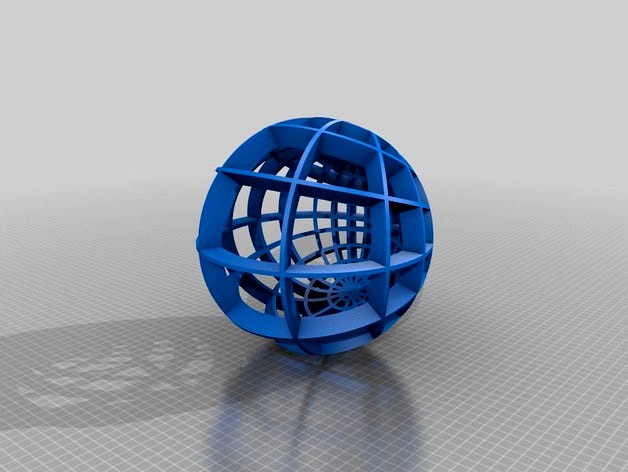
Coaxial Wireframe by johncbowers
by Thingiverse
Last crawled date: 3 years ago
This is a wireframe of a coaxial family of circles and its orthogonal family of circles on the sphere (also known as Apollonian circles). The circles are constructed as surfaces of revolution in such a way that each is the intersection of a sphere with a hollowed out cone.
What is remarkable about Apollonian circles like these is that every intersection of any two circle from one family with any circle from the other is at right angles. If you look closely you can see that the two families of circles are (1) a family which all intersect each other at two particular points on the sphere and (2) a family of circles that (informally) surround the two points that generate the other family.
More precisely, the two families can be generated using the following construction.
First, select two points on the sphere which we will call the generating points. Any plane that passes through those two points intersects the sphere at a circle. The set of all circles defined in this way defines the first family.
To get the second family, you take the planes through each of the two generating points that are tangent to the sphere. When the generating points are not antipodal (on opposite poles) these two planes will intersect at some line L. Now take any plane that contains L and intersects the sphere. It will intersect the sphere at a circle. The set of intersections of all such planes through L with the sphere defines the second family.
If the two points are antipodal (on opposite poles), then L is a line at infinity and the two planes are parallel. The set of planes through L is then defined to be all parallel planes. Notice that in this case, the two families of circles are the longitude and latitude lines of the sphere. Moreover, any Apollonian family generated as above can be found by applying a Mobius transformation to the longitude and latitude lines in the sphere which takes the North pole to the first generating point and the South pole to the second generating point.
What is remarkable about Apollonian circles like these is that every intersection of any two circle from one family with any circle from the other is at right angles. If you look closely you can see that the two families of circles are (1) a family which all intersect each other at two particular points on the sphere and (2) a family of circles that (informally) surround the two points that generate the other family.
More precisely, the two families can be generated using the following construction.
First, select two points on the sphere which we will call the generating points. Any plane that passes through those two points intersects the sphere at a circle. The set of all circles defined in this way defines the first family.
To get the second family, you take the planes through each of the two generating points that are tangent to the sphere. When the generating points are not antipodal (on opposite poles) these two planes will intersect at some line L. Now take any plane that contains L and intersects the sphere. It will intersect the sphere at a circle. The set of intersections of all such planes through L with the sphere defines the second family.
If the two points are antipodal (on opposite poles), then L is a line at infinity and the two planes are parallel. The set of planes through L is then defined to be all parallel planes. Notice that in this case, the two families of circles are the longitude and latitude lines of the sphere. Moreover, any Apollonian family generated as above can be found by applying a Mobius transformation to the longitude and latitude lines in the sphere which takes the North pole to the first generating point and the South pole to the second generating point.
Similar models
thingiverse
free

Coaxial Families by johncbowers
...coaxial families by johncbowers
thingiverse
this sphere has to orthogonal coaxial families (also called apollonian circles).
3dwarehouse
free

Latitude Longitude Lines
...itude lines
3dwarehouse
this file is used to aid in teaching the coordinate system on spheres like latitude and longitude lines.
grabcad
free

Desargues' theorem in space and in the plane
...e line. the connection lines of the vertices (red fibers, tightened by weights) go through a point at each position of the plane.
thingiverse
free

Coaxial Family 2 by johncbowers
...ily of circles and its orthogonal family on the sphere. instead of being recessed into the sphere, this one is extruded outwards.
3dwarehouse
free

Torus
...torus
3dwarehouse
a torus (doughnut) shape, defined by intersecting lines through the bi-tangent plane
3dwarehouse
free

Double Planar sphere
... sphere
3dwarehouse
sphere made of two planes, one is opposite the other, creates a honeycomb effect. #circle #honeycomb #sphere
thingiverse
free
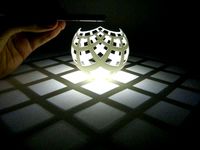
Stereographic projection by henryseg
...eographic projection is also available at shapeways.
update: added a version of the file with a wider base for easier printing.
thingiverse
free

Sphere coordinates by papacachalot
...ps explain the spherical coordinates and the concept of longitude and latitude.
three points are positioned for exercise purposes
3dwarehouse
free

point line plane
...point line plane
3dwarehouse
point line plane none, one, two dimensions circle, triangle, square heaven, sky, earth
thingiverse
free
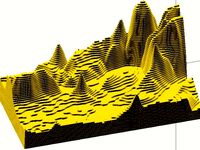
Paris contour / relief map by florianlb
...erent tools were used to obtain the final result. this method is applicable to any surface on earth defined by two corner points.
Johncbowers
thingiverse
free

Coaxial Families by johncbowers
...coaxial families by johncbowers
thingiverse
this sphere has to orthogonal coaxial families (also called apollonian circles).
thingiverse
free

Circle Packing by johncbowers
...s
thingiverse
a circle packing of the sphere (well, almost, one circle is off, can you find it?) and its orthogonal circle dual.
thingiverse
free

Koebe Polyhedron by johncbowers
...by the polyhedron. the dual-neckalce circles are those which are the intersection of the faces of the polyhedron with the sphere.
thingiverse
free

Coaxial Family 2 by johncbowers
...ily of circles and its orthogonal family on the sphere. instead of being recessed into the sphere, this one is extruded outwards.
thingiverse
free

Plesiosaurus Banana Stand by johncbowers
...h to hold an actual banana, so i'll have to try a new print of it on a bigger printer
make sure you scale it appropriately. .
thingiverse
free

Voronoi-like Pen Holder by johncbowers
...ion, i suspect this is simply the dual of the original triangulation produced in blender, which is almost certainly not delaunay.
thingiverse
free

Police Car Toothbrush Holder by johncbowers
...ion was printed in red abs on a flashforge creator pro. i printed on the flashforge slicer's fast print default settings.
Coaxial
3d_export
$35

coaxial stripping machine
...ree of automation, it can be divided into fully automatic coaxial stripping machine and semi-automatic coaxial stripping machine.
3d_export
$5

repair sleeve for manual transmission handle bmw
...b.m.w.<br>the sleeve is knocked out. i drilled a hole coaxialy with the bore from the top in the handle...
3d_export
$10

blanco blanco saga
...control technology.<br>the cartridge for manual water control is concealed coaxialy inside the body of the spout, and is operated...
3d_export
$60
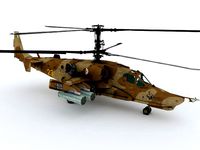
kamov ka-50 hokum a
...is a russian single-seat attack helicopter with the distinctive coaxial rotor system of the kamov design bureau. it was...
3d_export
$20

T 70
...l/46 model 38 with forty-five rounds carried, and a coaxial 7.62-mm dt machine g4n. the tank was operated by...
3d_export
$20
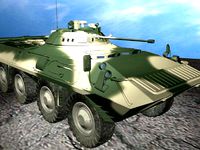
btr90 armored personnel carrier russia
...arc. it is armed with a 30 mm autocanon, coaxial 7.62mm machinegun, as well as ags-17 a 30mm automatic...
3d_export
$20

wire laser cutting peeling cutting machine ffc cutting machine
...equipment is suitable for cutting and peeling products: fpc coaxial line, ffc wire, laser cutting and peeling of various...
3d_export
$50

Tank Oplot-M Main Battle Tank Ukraine 3D Model
...with a kba-3 125mm smoothbore gun, a kt-7.62 (pkt) coaxial machine gun and a kt-12.7 anti-aircraft machine gun. the...
3d_export
$18

tramontina liz collection white
...doorbell switch<br>- module usb outlet<br>- module tv/sat outlet direct coaxiallt;br>- module outlet ehternet<br>- module push button switch<br>- module bipolar...
3d_export
$18

tramontina liz collection fendi
...doorbell switch<br>- module usb outlet<br>- module tv/sat outlet direct coaxiallt;br>- module outlet ehternet<br>- module push button switch<br>- module bipolar...
Wireframe
design_connected
$16

Wireframe armchair
...wireframe armchair
designconnected
herman miller wireframe armchair computer generated 3d model. designed by hecht, sam.
turbosquid
$30

WIREFRAME - ROME
...d
royalty free 3d model wireframe - rome for download as fbx on turbosquid: 3d models for games, architecture, videos. (1437291)
turbosquid
$29

Wireframe Face
... available on turbo squid, the world's leading provider of digital 3d models for visualization, films, television, and games.
turbosquid
$5

Wireframe Table
...wireframe table for download as 3ds, obj, fbx, blend, and dae on turbosquid: 3d models for games, architecture, videos. (1229971)
3ddd
$1

Wireframe Armchair and Ottoman
...анка
these are wireframe armchair and ottoman of hermanmiller.
i use soft marvelous designer, 3dsmax and vray.
hope you like it!
turbosquid
$17

Horse Voronoi wireframe
... 3d model horse voronoi wireframe for download as stl and obj on turbosquid: 3d models for games, architecture, videos. (1561644)
turbosquid
$17

Wireframe Basket Set
...ree 3d model wireframe basket set for download as max and fbx on turbosquid: 3d models for games, architecture, videos. (1200816)
turbosquid
$15

Cat Voronoi wireframe
...ee 3d model cat voronoi wireframe for download as obj and stl on turbosquid: 3d models for games, architecture, videos. (1561639)
turbosquid
$4

Wireframe Cylinder Bin
... available on turbo squid, the world's leading provider of digital 3d models for visualization, films, television, and games.
turbosquid
$2

Wireframe Triangle Bin
... available on turbo squid, the world's leading provider of digital 3d models for visualization, films, television, and games.
